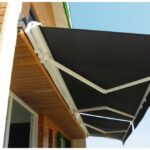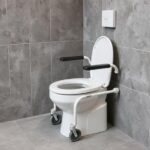As the cold weather sets in, ensuring a warm and cozy home becomes a top priority for every homeowner. Electric heaters have emerged as one of the most popular solutions for providing efficient, cost-effective, and reliable warmth. Whether you’re seeking an energy-efficient option or looking to supplement your central heating system, electric heaters offer a wide array of choices to suit different needs. In this comprehensive guide, we will delve into the world of electric heaters for homes, exploring their types, benefits, usage tips, and safety considerations.
1. Understanding Electric Heaters
Electric heaters are devices that generate heat through electrical resistance, converting electrical energy into heat energy. They are versatile and can be used in various settings, including homes, offices, garages, and even outdoor spaces. Homeowners can choose from several types of electric heaters, each offering unique features and advantages.
2. Types of Electric Heaters
a) Convection Heaters: Convection heaters work by heating the air around them, creating a warm airflow that circulates throughout the room. They are silent, efficient, and suitable for maintaining a steady temperature in enclosed spaces.
b) Radiant Heaters: Radiant heaters emit infrared radiation, which directly heats people and objects in their path. They are ideal for spot heating, providing instant warmth without warming the entire room. Radiant heaters are particularly useful for personal heating in smaller spaces.
c) Oil-Filled Heaters: Oil-filled heaters use electricity to heat oil within their coils, and the heat is then radiated out into the room. These heaters retain heat even after being turned off, making them an energy-efficient choice for prolonged use.
d) Ceramic Heaters: Ceramic heaters employ a ceramic element to generate heat and distribute it through a fan. They offer rapid heating and are suitable for heating small to medium-sized rooms.
e) Fan-forced Heaters: Fan-forced heaters use a built-in fan to blow air over heated coils, providing quick and even heating throughout the room. They are perfect for larger spaces and instant heating requirements.
3. Advantages of Electric Heaters for Homes
a) Energy Efficiency: Electric heaters are generally more energy-efficient than their gas or oil counterparts because they convert almost all the electricity into heat. Additionally, modern electric heaters often come with programmable thermostats, allowing users to regulate temperature and save on energy costs.
b) Safety: Electric heaters eliminate the risks associated with open flames or combustible fuels, making them safer for homes with children or pets. Most models also feature tip-over and overheating protection to prevent accidents.
c) Easy Installation: Electric heaters are straightforward to install and usually require only a power outlet, eliminating the need for complicated venting systems.
d) Portability: Many electric heaters are lightweight and compact, enabling easy portability from room to room.
e) Quiet Operation: Unlike traditional heating systems with noisy blowers, electric heaters operate quietly, ensuring minimal disturbance during use.
4. Factors to Consider When Choosing an Electric Heater
a) Heating Capacity: Consider the size of the room you want to heat, and choose an electric heater with an appropriate heating capacity to ensure effective warmth.
b) Energy Efficiency: Look for heaters with energy-saving features like programmable timers and thermostats to optimize energy consumption.
c) Safety Features: Prioritize models with safety features such as tip-over protection and overheating shut-off to prevent accidents.
d) Portability and Design: If you need to move the heater around frequently, opt for a lightweight and portable design.
e) Noise Level: For quiet environments or bedrooms, choose a heater with a low noise level.
f) Certifications: Ensure the electric heater has relevant safety certifications, such as UL or CSA approval.
5. Tips for Efficient Use
a) Optimal Placement: Position the heater away from furniture, curtains, and other combustible materials to prevent fire hazards.
b) Use Timers and Thermostats: Set timers and thermostats to maintain a comfortable temperature and avoid running the heater when it’s unnecessary.
c) Supplemental Use: Consider using electric heaters to supplement central heating, allowing you to lower the overall temperature of the house and save on energy bills.
d) Insulate Your Home: Improve the heater’s efficiency by insulating your home properly, preventing heat loss and reducing the workload on the heater.
6. Safety Precautions
a) Unattended Use: Avoid leaving electric heaters unattended, especially when children or pets are present.
b) Proper Ventilation: Ensure adequate ventilation in the room when using any type of heater to prevent the build-up of carbon monoxide.
c) Keep Flammable Materials Away: Avoid placing flammable materials near the heater to prevent fire hazards.
d) Regular Maintenance: Regularly clean and inspect the heater for any damages or malfunctions.
Conclusion
Electric heaters have revolutionized home heating by providing a safe, efficient, and versatile solution for staying warm during the colder months. With various types and features available, homeowners can choose the perfect electric heater to suit their needs and preferences. By understanding the benefits, safety considerations, and efficient usage tips outlined in this guide, you can create a cozy and comfortable home environment while keeping energy costs in check. Remember to prioritize safety and follow the manufacturer’s guidelines for the best results from your electric heater. Stay warm and comfortable as you embrace the convenience and warmth provided by electric heaters in your home!











